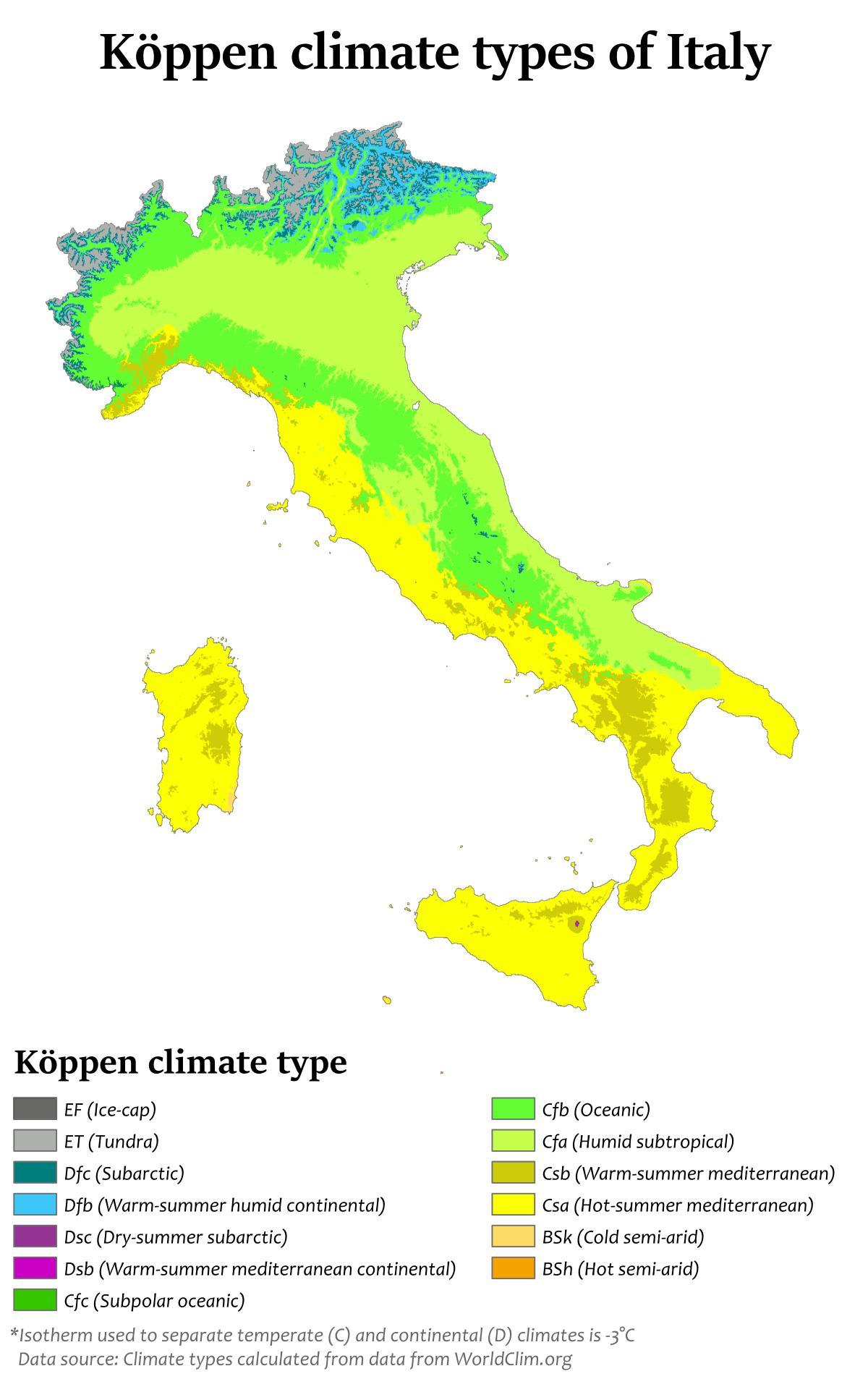search
Italy climate map
Map of Italy climate. Italy climate map (Southern Europe - Europe) to print. Italy climate map (Southern Europe - Europe) to download. The inland northern areas of Italy (for example Turin, Milan, and Bologna) have a continental climate typically classified as Humid subtropical climate (Köppen climate classification Cfa), while the coastal areas of Liguria and the peninsula south of Florence generally fit the Mediterranean climate stereotype (Köppen climate classification CSa) as its shown in Italy climate map. Between the north and south there can be a considerable difference in temperature, above all during the winter: in some winter days it can be –2 °C (29 °F) and snowing in Milan, while it is 12 °C (54 °F) in Rome and 22 °C (72 °F) in Cagliari. Temperature differences are less extreme in the summer.
The east coast of the peninsula of Italy is not as wet as the west coast, but is usually colder in the winter. The east coast north of Pescara is occasionally affected by the cold bora winds in winter and spring, but the wind is less strong here than around Trieste as its mentioned in Italy climate map. During these frosty spells from E–NE cities like Rimini, Ancona, Pescara and the entire eastern hillside of the Apennines can be affected by true "blizzards". The town of Fabriano, located just around 300 m in elevation, can often see 0.5–0.6 m of fresh snow fall in 24 hours during these episodes.
On the coast from Ravenna to Venice and Trieste, snow falls more rarely: during cold spells from east, the cold can be harsh but with bright skies; while, during the snowfalls that affects Northern Italy, the Adriatic coast can see a milder Sirocco wind which makes snow turn to rain—the mild effects of this wind often disappear just a few kilometres inside the plain, and sometimes the coast from Venice to Grado sees snow while it is raining in Trieste, the Po River mouths and Ravenna as you can see in Italy climate map. Rarely, the city of Trieste may see snow blizzards with north-eastern winds; in the colder winters, the Venice Lagoon may freeze, and in the coldest ones even enough to walk on the ice sheet.


